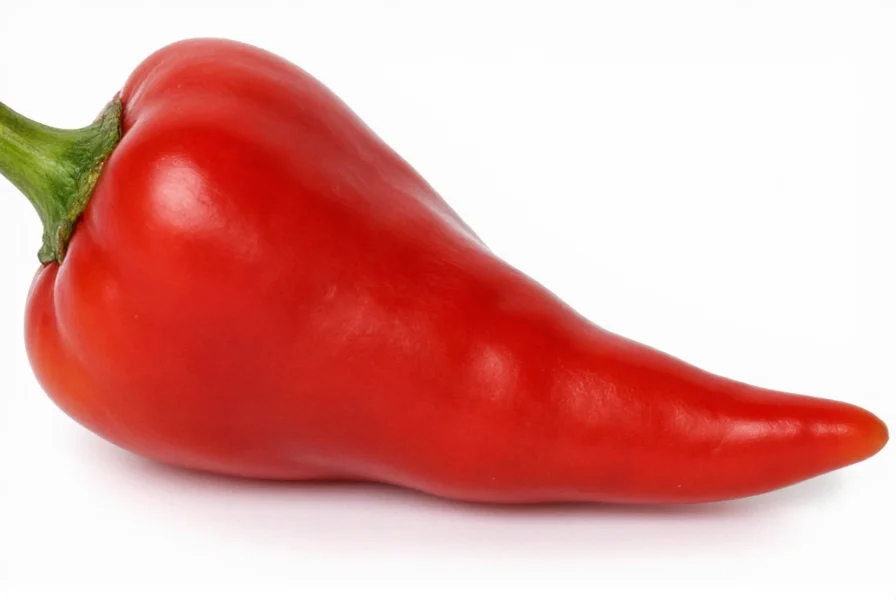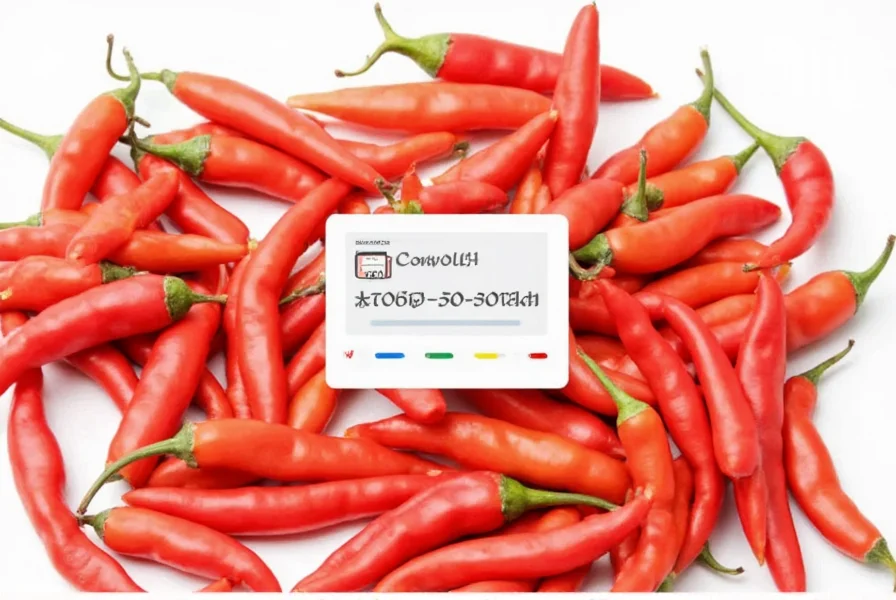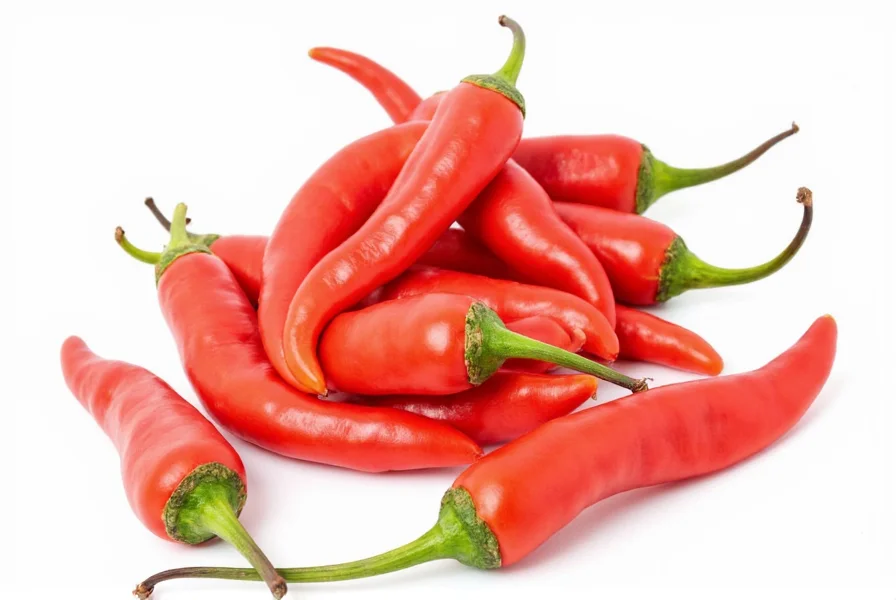Understanding where cayenne pepper falls on the Scoville scale helps cooks and spice enthusiasts make informed decisions about its use in recipes. The Scoville scale, developed by pharmacist Wilbur Scoville in 1912, measures the pungency or spiciness of chili peppers and other spicy foods through their capsaicin concentration.
What the Scoville Rating Means for Cayenne Pepper
At 30,000-50,000 SHU, cayenne pepper delivers significant heat that's noticeable but generally manageable for most spice-tolerant individuals. To put this in perspective, it's approximately 12 times hotter than a typical jalapeño pepper, which ranges from 2,500 to 8,000 SHU.
The specific heat level of cayenne can vary based on growing conditions, soil composition, climate, and even the particular variety. Some cayenne peppers might test at the lower end of the scale (30,000 SHU), while others grown in optimal conditions can reach the upper limit (50,000 SHU) or slightly beyond.
Comparing Cayenne Pepper to Other Common Peppers
Understanding cayenne's position on the heat spectrum requires context. The following table shows how cayenne pepper compares to other popular chili varieties:
| Pepper Variety | Scoville Heat Units (SHU) | Heat Level Comparison |
|---|---|---|
| Bell Pepper | 0 SHU | No heat |
| Jalapeño | 2,500-8,000 SHU | Mild to medium |
| Serrano | 10,000-23,000 SHU | Medium hot |
| Cayenne | 30,000-50,000 SHU | Medium-hot |
| Thai Bird's Eye | 50,000-100,000 SHU | Very hot |
| Habanero | 100,000-350,000 SHU | Extremely hot |
| Ghost Pepper | 800,000-1,041,427 SHU | Super hot |
Factors That Influence Cayenne Pepper's Heat Level
Several elements affect the final Scoville rating of cayenne peppers:
- Growing conditions - Stressors like limited water or nutrient-deficient soil can increase capsaicin production
- Ripeness - Fully mature red cayenne peppers tend to be hotter than younger green varieties
- Part of the pepper - The placenta (white ribs) contains the highest concentration of capsaicin
- Processing method - Dried cayenne powder often tests higher on the Scoville scale than fresh peppers
- Geographical origin - Regional growing differences impact heat levels
Practical Applications of Cayenne's Heat Level
Knowing the cayenne pepper scoville units range helps in culinary applications. At 30,000-50,000 SHU, cayenne works well when you need noticeable heat without overwhelming other flavors. It's substantially hotter than jalapeño peppers but significantly milder than habaneros.
Chefs often use cayenne when they want to add heat without the fruity notes of habaneros or the grassy flavor of serranos. The consistent heat profile makes it valuable for commercial food production where standardized spiciness matters.
When substituting cayenne for other peppers, remember that cayenne pepper vs red pepper flakes scoville measurements differ - red pepper flakes typically contain a mix of peppers with varying heat levels, while pure cayenne offers more predictable spiciness.
Handling Cayenne Pepper Safely
Due to its significant heat level, proper handling of cayenne pepper is essential. The capsaicin that gives cayenne its 30,000-50,000 SHU rating can cause skin and eye irritation. Always wash hands thoroughly after handling, and consider wearing gloves when working with large quantities.
If you accidentally touch your eyes after handling cayenne, rinse with cold milk rather than water, as capsaicin is fat-soluble. For accidental ingestion of too much cayenne, dairy products like yogurt or milk provide relief faster than water.
Measuring Scoville Ratings Today
While the original Scoville test relied on human tasters diluting pepper extract until heat was undetectable, modern laboratories use high-performance liquid chromatography (HPLC) to measure capsaicinoid content precisely. This scientific method provides more accurate and consistent cayenne pepper scoville units range measurements without human subjectivity.
The HPLC results are then converted to Scoville units using a standard formula, maintaining continuity with the historical scale while improving measurement reliability. This explains why you might see slightly different SHU ranges reported for cayenne pepper from various sources.
Understanding Capsaicin Content
The heat of cayenne pepper directly correlates to its capsaicin content, which typically ranges from 0.15% to 0.30% in dried cayenne. This compound not only creates the burning sensation but also offers potential health benefits, including pain relief and metabolism boosting.
When comparing how hot is cayenne pepper compared to jalapeno, the difference becomes clear through capsaicin concentration. Jalapeños contain about 0.01%-0.03% capsaicin, explaining their significantly lower position on the Scoville scale.

Using Cayenne Pepper Appropriately in Cooking
Understanding the precise what is the scoville rating of cayenne pepper helps in recipe development. For most home cooks, 1/8 to 1/4 teaspoon of cayenne powder provides noticeable heat in a standard four-serving dish. When substituting fresh cayenne for dried, use approximately three times the amount of fresh pepper to achieve similar heat levels.
Remember that cooking doesn't eliminate capsaicin - the heat compounds remain stable through the cooking process. Acidic ingredients like tomatoes or vinegar can help balance cayenne's heat, while dairy products provide immediate relief from excessive spiciness.

Conclusion
Cayenne pepper's Scoville rating of 30,000-50,000 SHU places it as a versatile medium-hot chili that delivers significant heat without crossing into the extreme ranges of peppers like habaneros or ghost peppers. This predictable heat profile makes it valuable for both home cooking and commercial food production where consistent spiciness matters.
Whether you're wondering is cayenne pepper hotter than habanero (it's not - habaneros are significantly hotter) or trying to understand how cayenne compares to other common peppers, knowing its precise position on the Scoville scale helps make informed decisions about its use in recipes and products.











 浙公网安备
33010002000092号
浙公网安备
33010002000092号 浙B2-20120091-4
浙B2-20120091-4